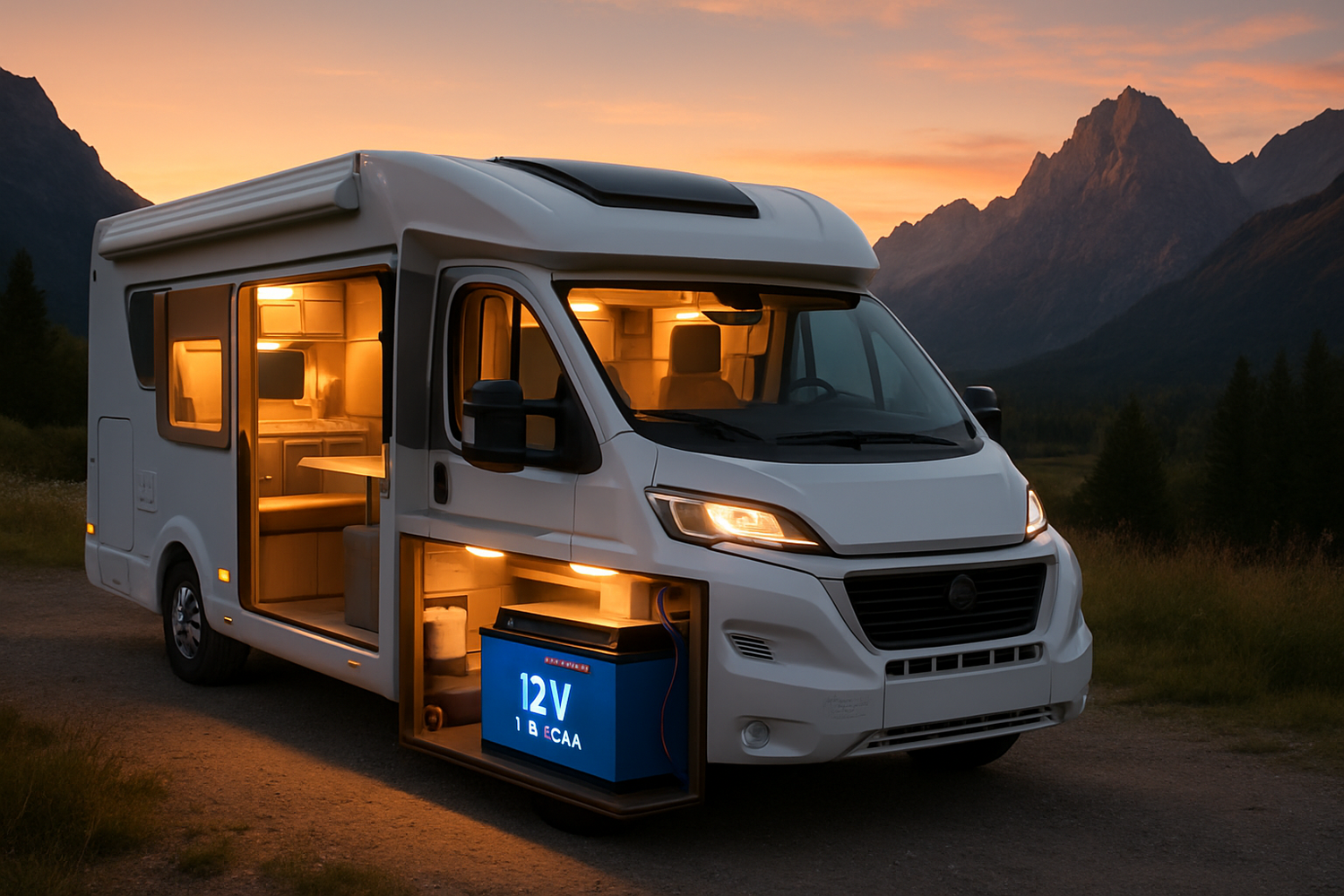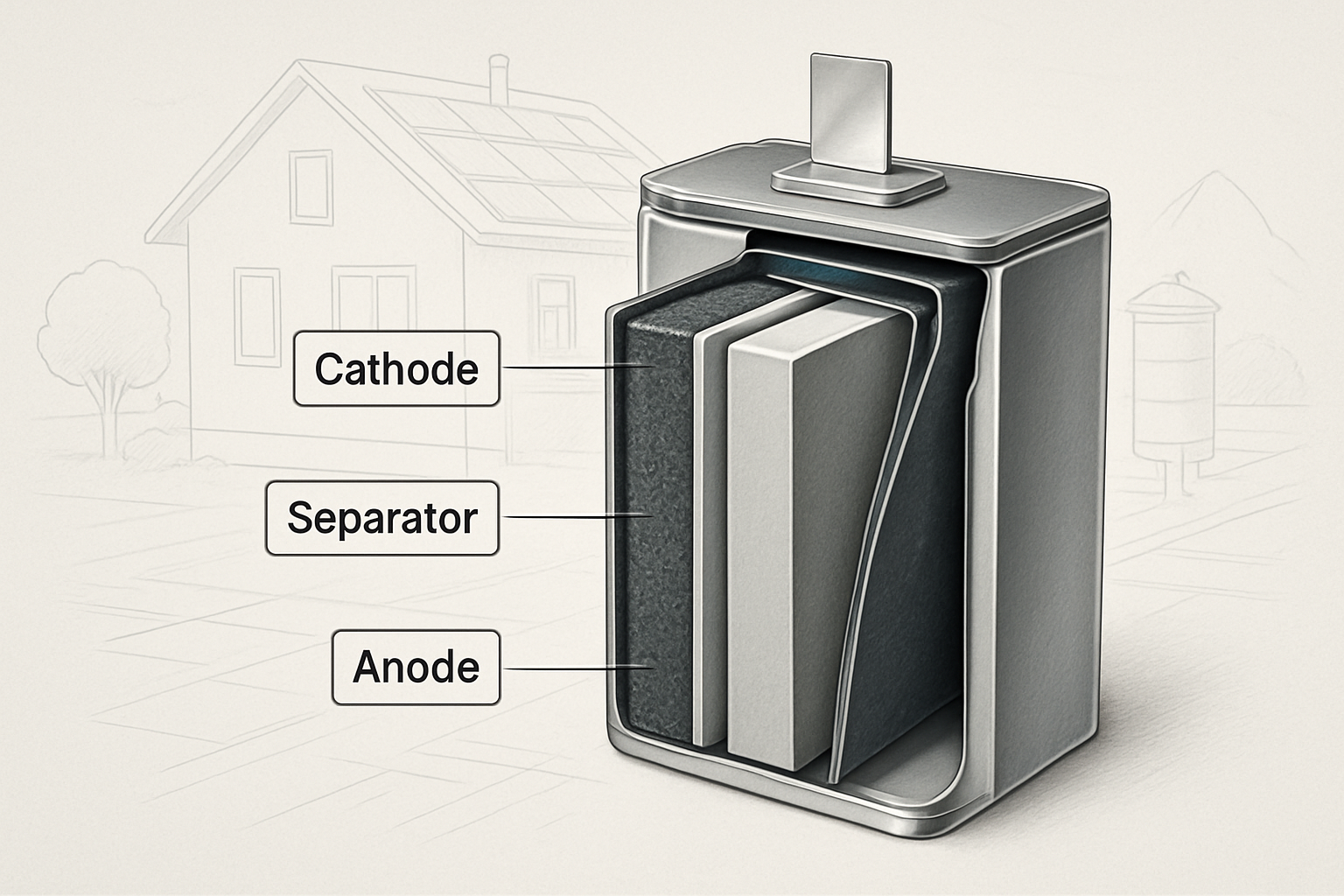The essence of RV travel is freedom—the ability to explore remote landscapes without sacrificing comfort. This freedom relies on a dependable source of power. For years, travelers have depended on traditional lead-acid batteries, accepting their limitations as part of the lifestyle. Today, a superior technology offers a more reliable and efficient solution: the 12V LiFePO4 battery. An RV battery upgrade to 12V LiFePO4 technology is a direct investment in longer, more comfortable, and less restrictive adventures.
The LiFePO4 Advantage for Modern RV Travel
Lithium iron phosphate, or LiFePO4, batteries present a substantial leap forward in energy storage. Their unique chemistry and construction provide tangible benefits for RV power systems, addressing the primary drawbacks of older battery types.
Exceptional Lifespan and Long-Term Value
One of the most compelling lithium iron phosphate advantages for an RV is longevity. A LiFePO4 battery can typically deliver between 3,000 and 5,000 charge cycles, and sometimes more. In contrast, a conventional lead-acid battery often lasts for only 300 to 500 cycles. This durability means a single LiFePO4 battery can outlast multiple sets of lead-acid batteries, making it a more economical choice over its operational life. Furthermore, LiFePO4 batteries can be regularly discharged to 80-100% of their capacity without suffering significant degradation. Lead-acid batteries, on the other hand, should not be discharged below 50% to avoid permanent damage. This means a 100Ah LiFePO4 battery provides nearly double the usable energy of a 100Ah lead-acid battery.
Consistent Power for All Your Appliances
Have you ever noticed your lights dimming as your battery drains? This is due to voltage sag, a common issue with lead-acid batteries. As they discharge, their voltage steadily drops, impacting the performance of appliances. A 12V LiFePO4 battery for RV power maintains a flat voltage curve, delivering consistent power until it is nearly empty. This stability ensures that your microwave, refrigerator, and sensitive electronics operate efficiently and safely, without the risk of malfunction from low voltage.
Significant Weight Reduction
Weight is a critical factor in any RV. Every pound saved contributes to better fuel economy and increases the available payload for water, gear, and personal items. LiFePO4 batteries are typically less than half the weight of their lead-acid counterparts. For instance, a 100Ah LiFePO4 battery weighs around 25-30 pounds, while a 100Ah lead-acid battery can easily exceed 60 pounds. This weight saving reduces strain on your vehicle's chassis and suspension, contributing to a safer and more efficient ride.
Safety and Reliability on the Road
When you're far from home, you need equipment you can trust. The chemical composition of LiFePO4 batteries makes them inherently safer than other lithium-ion variants and far more stable than lead-acid batteries.
The Chemistry of Stability
The phosphate-based cathode material in LiFePO4 batteries is extremely stable and not prone to thermal runaway, a risk associated with other lithium chemistries. They can withstand higher temperatures without degrading. Additionally, every quality 12V LiFePO4 battery includes an integrated Battery Management System (BMS). This electronic controller protects the cells from overcharging, over-discharging, short circuits, and extreme temperatures, ensuring safe and reliable operation under all conditions.
Maintenance-Free Operation
Flooded lead-acid batteries require regular maintenance, including checking and topping off electrolyte levels and cleaning corrosive buildup from the terminals. LiFePO4 batteries are completely sealed and require no maintenance. This 'set it and forget it' convenience allows you to spend more time enjoying your travels and less time worrying about your power system. According to the U.S. Department of Energy, stable battery chemistries like LiFePO4 are key to developing robust and safe energy storage solutions.
Practical Considerations for an RV Battery Upgrade
Transitioning to a LiFePO4 battery system is straightforward, but a few considerations will ensure you get the most from your investment. Proper system design is crucial for maximizing the LiFePO4 battery benefits for RV travel.
Sizing Your Power Bank
To correctly size your battery bank, calculate your daily energy consumption in watt-hours (Wh). List all the DC appliances you use, multiply their power consumption in watts by the number of hours you use them each day, and sum the results. Because LiFePO4 offers more usable capacity, you may not need a direct amp-hour-for-amp-hour replacement. A smaller LiFePO4 bank can often provide the same usable energy as a much larger lead-acid bank.
| Feature | 12V LiFePO4 Battery | Traditional Lead-Acid Battery |
|---|---|---|
| Typical Lifespan (Cycles) | 3,000 - 5,000+ | 300 - 500 |
| Usable Capacity (DoD) | 80% - 100% | 50% |
| Weight (100Ah) | Approx. 25-30 lbs | Approx. 60-70 lbs |
| Voltage Stability | Stable throughout discharge | Voltage drops significantly |
| Maintenance | None required | Regular water checks (flooded) |
| Charging Speed | Fast (Accepts higher current) | Slow |
Charging System Compatibility
LiFePO4 batteries can accept charge at a much higher rate than lead-acid batteries, significantly reducing charging times from solar, an alternator, or a shore power converter. However, it is important to ensure your charging equipment is compatible. Most modern solar charge controllers and RV power converters have a specific lithium charging profile. Using the correct profile is essential for the battery's health and longevity. For a detailed look at how different components influence charging efficiency, the ultimate reference on solar storage performance provides valuable data and comparisons. The International Renewable Energy Agency (IRENA) also notes that advancements in power electronics are critical for integrating advanced battery storage effectively.
Installation and Cold Weather Use
Because they do not produce gas during charging, LiFePO4 batteries can be safely installed in any orientation within your living space, freeing up exterior storage compartments. One key consideration is cold weather performance. A standard BMS will prevent charging at temperatures below freezing (0°C or 32°F) to protect the battery cells. If you plan to camp in cold climates, consider a battery with built-in heating elements or install your battery bank in a heated compartment.
A Smarter Path to Energy Independence
Upgrading your RV's power system with a 12V LiFePO4 battery is more than just a component swap; it's a fundamental improvement to your travel experience. The combination of a long lifespan, high performance, low weight, and enhanced safety provides unmatched value and reliability. This technology empowers you to stay off-grid for longer, run more appliances, and travel with the confidence that your power system will not fail. It is a direct investment in freedom, comfort, and peace of mind on the open road.
Frequently Asked Questions
Can I replace my lead-acid RV battery directly with a 12V LiFePO4 battery?
In many cases, yes, as they are often designed as 'drop-in' replacements. However, you should verify that your RV's charging system (converter/charger, solar charge controller) has a lithium-compatible charging profile or can be adjusted. Using an incompatible charger can reduce the battery's performance and lifespan.
Do LiFePO4 batteries require a special charger?
It is highly recommended to use a charger specifically designed for LiFePO4 batteries or one with a dedicated lithium setting. These chargers use a CC/CV (Constant Current/Constant Voltage) algorithm tailored to the battery's chemistry, ensuring a full, safe charge and maximizing its lifespan.
How does a LiFePO4 battery handle the vibrations and bumps of road travel?
LiFePO4 batteries are built with solid components and are generally more resistant to vibration than traditional lead-acid batteries, which contain fragile lead plates suspended in liquid electrolyte. This robust construction makes them well-suited for the mobile environment of an RV.





Leave a comment
All comments are moderated before being published.
This site is protected by hCaptcha and the hCaptcha Privacy Policy and Terms of Service apply.